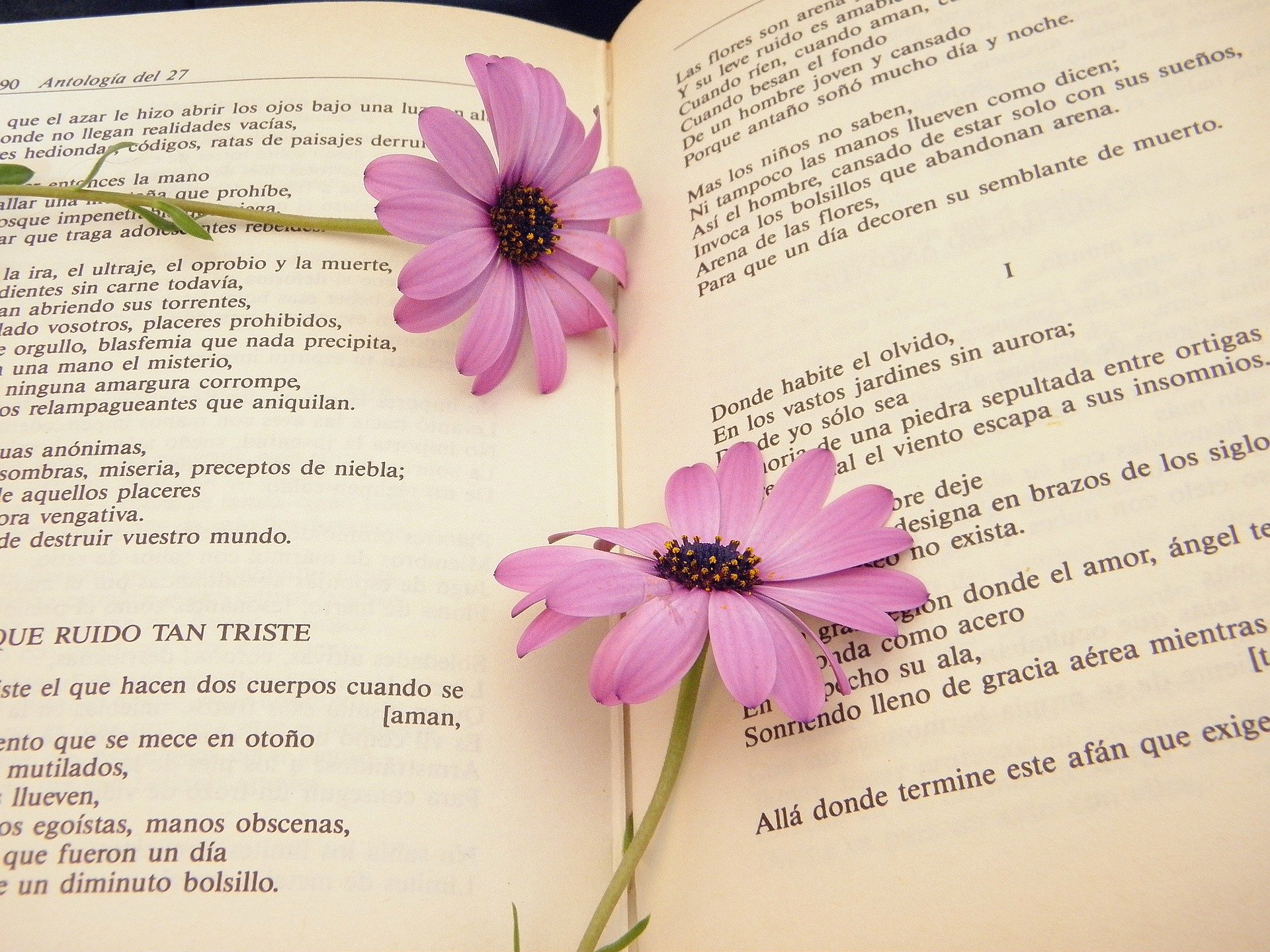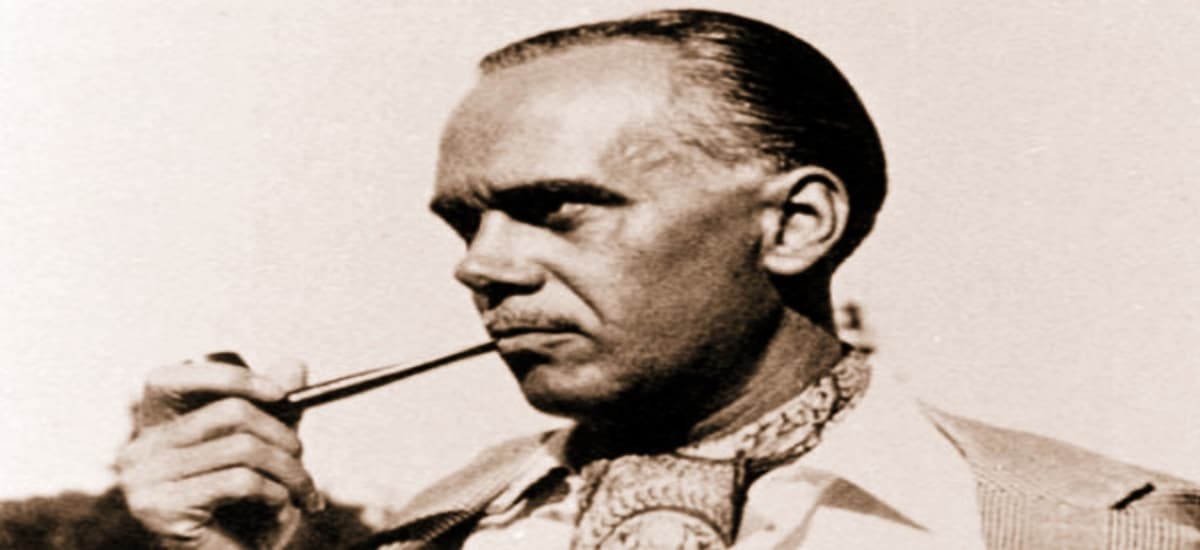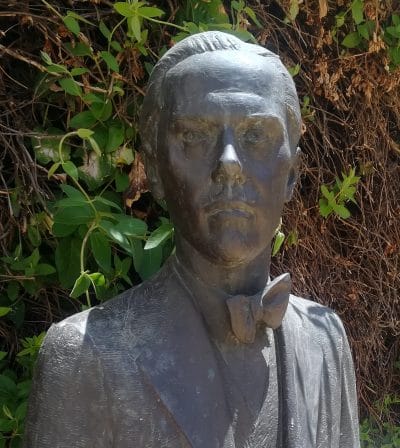
"Where oblivion dwells" is a work of Luis Cernuda whose title is taken from a verse by Bécquer and which in turn gives its name to a song by the Spanish singer-songwriter Joaquín Sabina. Oblivion, obviously that produces pain at the end of a love, is the axis around which the entire collection of poems revolves. It is a kind of death, an erasure of memories that leads the poet to feel frustrated by what has remained of what was once a beautiful feeling.
This is the negative part of the love, of the consequence, of what remains when it ceases to exist, and in a certain way it is what any being a lover is exposed to, since nothing is forever and the end of the love stage will inevitably give way to oblivion that will bring feelings negative as opposed to the positivity of the previous stage in which joy and well-being were the basic pillars.
Like the opposition between love and heartbreakBetween memory and oblivion, between joy and frustration, another antithesis appears in the work, which is the one between angel and devil, who appear as poetic voices whispering to the reader.
This work is the most recognized by Luis Cernuda that, although it did not achieve a good criticism in his first collections of poems, it received all the praise with the publication of the book that we are dealing with now.
Where oblivion lives, the book
Luis Cernuda's book Where oblivion dwells was published in 1934, despite the fact that the poems it contains were written between 1932 and 1933. Among them, one of the best known is undoubtedly the one that gives its name to the title.
This collection of poems belongs to the author's young stage, when he suffered a love disappointment and the reason why he writes about love as if it were something bad or with bitter feelings towards it.
In addition, it is known that the title that he gave to the poem, as well as to his collection of poems, was not actually his invention, but rather that he looked at another author, Gustavo Adolfo Bécquer, who in Rima LXVI, in its fifteenth verse, is it says "where oblivion dwells."
The book is composed of several poems, but practically all of them with negative and pessimistic feelings about love and life. Despite the fact that Luis Cernuda's early works received a lot of criticism, he kept trying and evolving, something that he achieved years later.
Analysis of Where oblivion dwells

Within the collection of poems, the one that bears the same name as the book is the best known of all, and also the one that condenses all the themes that the author deals with in this work. Therefore, reading it can give an idea of the moment he was going through and the reason why all the other poems border on pessimism, loneliness, sorrow, etc.
Where oblivion lives 22 verses that are divided into 6 stanzas. However, the meter is not actually the same in all the verses but there is unevenness and some verses are much longer than others.
Nor are the stanzas all the same in number of verses. The first consists of 5 verses while the second is 3; the third of 4 ... leaving the last with only 2. What he does use quite well are different figures of speech such as:
-
Personification. Attribute a human quality, action or something to an object or idea.
-
Image. It is a rhetorical figure that seeks to describe a real thing in words.
-
Anaphora. It is about repeating a word, or several, both at the beginning of the verse and in a sentence.
-
Simile. Compare two words that have a common quality between them.
-
Antithesis. It refers to exposing the opposition of an idea that is usually also reflected in the poem.
-
Symbol. It is used to substitute one word for another.
The structure of the poem does follow a circular pattern since it begins with an idea that is basted until it ends. In fact, once you look at the poem, you will see that it begins with the same thing that ends, (where oblivion lives), establishing three different parts within it.
Part 1 of the poem
In it verses 1 to 8, the first two stanzas, would be condensed. The topic covered in these is about the death of love, a spiritual death, but due to his disappointment in love, the author no longer trusts that feeling.
Part 2 of Where oblivion dwells
In this part verses 9 to 15 would be included, that is, stanzas 3 and 4. It is perhaps more pessimistic in this part of the poem since its desire is stop believing in love, try by all means to think about that feeling and break with everything I had thought about love.
Step 3 —
Finally, the third part of the poem, from verses 16 to 22 (stanzas 5 and 6) speak of wanting to get rid of the feeling of love, of not wanting to experience it again and that it only remains as a memory in a memory, to get rid of that feeling of wanting to be next to a person.
What does the poem of Where oblivion inhabit means
Where oblivion dwells became for Luis Cernuda a way of expressing the pain he felt for the love disappointment he had experienced. In fact, for him it meant wanting not to fall in love again, not believing in love again, and wanting to forget everything that had happened.
All those feelings are condensed by the author in this poem, although the book has many more. However, it is perhaps the one that places the greatest emphasis since it speaks of the existence of love, but also of the suffering that comes with being carried away by it. For this reason, when things do not go as they are supposed to have idealized, what he wants is to disappear, to die, because even though that angel whom he can refer to as "Cupid" has nailed an arrow of love, he has not done the same in the other person.
Therefore, the author tries to take refuge in oblivion to cease negative thoughts and to stop feeling pain and despair for the memory of those moments that you have lived.
Contextualization of the poem

Luis Cernuda was born in 1902 in Seville. He was one of the best poets of the Generation of 27, but he also suffered a lot, making his poetry a reflection of the feelings he experienced in his life.
The first experience he had with literature was through his great friend Pedro Salinas, when he was studying law at the University of Seville (1919). At that time, he began to meet other authors in addition to writing his first book.
In 1928 he traveled to work in Toulouse. He will stay for about a year, since in 1929 he begins to live and work in Madrid. It is known that he worked since 1930 in the León Sánchez Cuesta bookstore, in addition to rubbing shoulders with other authors such as Federico García Lorca, or Vicente Aleixandre. It was in those meetings with authors that Lorca introduced him to Serafín Fernández Ferro in 1931, a young actor who stole the heart of the poet. The problem is that he only wanted his money from Cernuda, and, as he did not feel reciprocated, it was the moment in which he inspired the poem Where oblivion inhabits (along with the rest of the poems that are part of the collection of the same name). At that time he was 29 years old, although the poems are classified within his youth stage.
In fact, he had to mark him too much since it is not known that he had another love other than that, so it is likely that he complied with what he wrote in the poem of Where oblivion inhabits, moving away from love and focusing on other feelings .